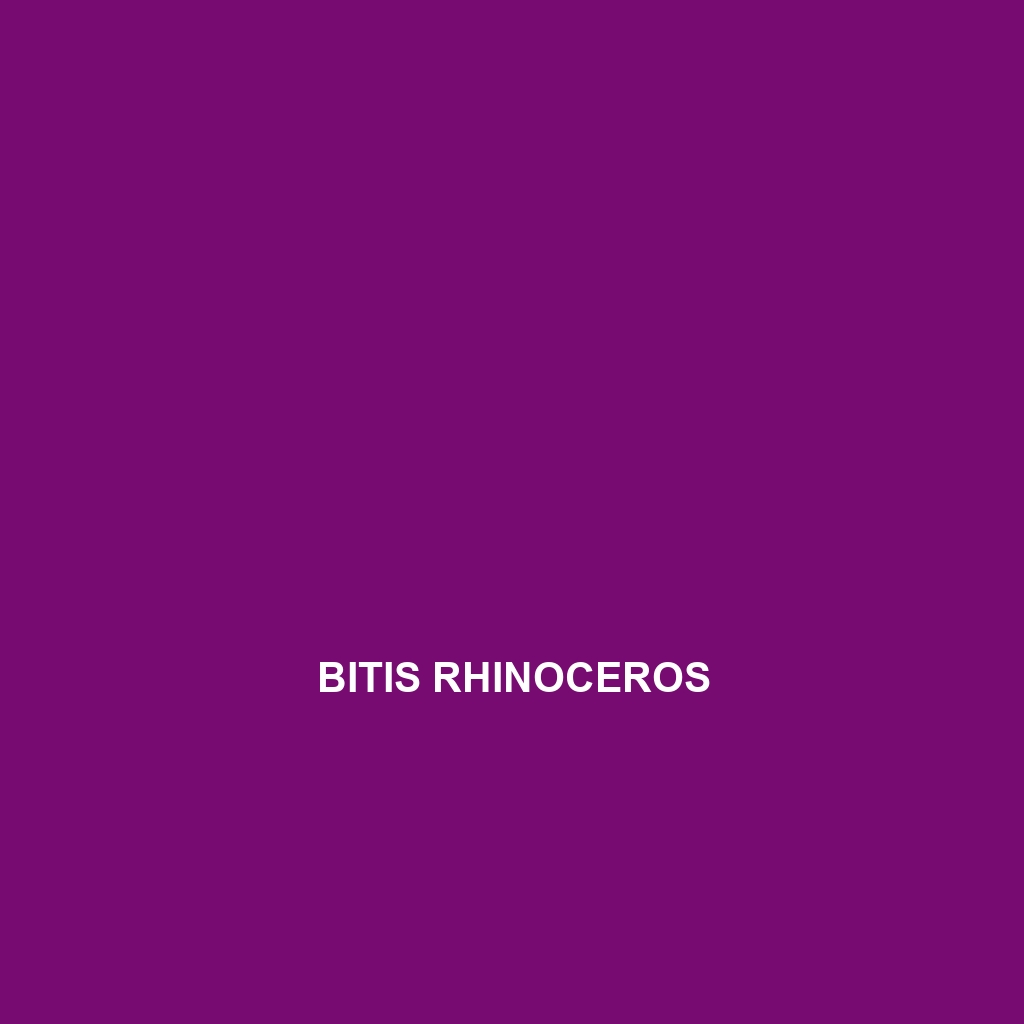Bitis rhinoceros: Overview
Common Name: Bitis rhinoceros
Scientific Name: Bitis rhinoceros
Habitat
Bitis rhinoceros, commonly known as the rhinoceros viper, is primarily found in the dense rainforests of Central Africa. This species thrives in humid, tropical environments, often residing in lowland rainforests, riverine forests, and occasionally in secondary growth areas. Its geographic distribution includes countries such as the Democratic Republic of the Congo, Gabon, Cameroon, and parts of Equatorial Guinea, where warm temperatures and ample humidity contribute to its ideal habitat.
Physical Characteristics
The rhinoceros viper is a strikingly beautiful snake, distinguished by its vibrant coloration and unique physical features. Adult Bitis rhinoceros typically reach lengths of 60 to 90 centimeters (24 to 35 inches), with some individuals growing even larger. Their bodies are adorned with a mix of green, yellow, and brown scales, often exhibiting a stunning pattern of spots and bands that provide excellent camouflage in the forest undergrowth. Most notably, this species possesses distinct, horn-like scales on its snout, which resemble a rhinoceros’s horn, adding to its unusual appearance.
Behavior
Bitis rhinoceros is primarily a terrestrial snake, although it can occasionally be found climbing low branches. It exhibits a primarily nocturnal behavior, becoming active at night to hunt for prey. This species is known for its ambush strategy, using its vibrant coloration for effective camouflage while waiting in leaf litter for unsuspecting prey to approach. During the day, rhinoceros vipers often seek shelter under logs or in dense vegetation, limiting their visibility to both predators and potential prey.
Diet
The diet of Bitis rhinoceros primarily consists of small mammals, birds, and amphibians. As a venomous snake, it uses its potent hemotoxic venom to subdue prey before consumption. This species is known for its patience while hunting; it can remain motionless for extended periods to strike at passing animals with precision. The rhinoceros viper’s feeding habits exemplify its role as a predator in its rainforest ecosystem, helping to control the populations of small vertebrates.
Reproduction
Bitis rhinoceros is ovoviviparous, meaning that females give birth to live young. The breeding season typically occurs during the rainy months, which vary by location but generally take place from October to December. After a gestation period of around six months, females give birth to live young, usually consisting of 10 to 20 offspring. The young are immediately independent upon birth and exhibit similar hunting and survival behaviors as adults from a very young age.
Conservation Status
Currently, Bitis rhinoceros is classified as “Near Threatened” by the International Union for Conservation of Nature (IUCN). The main threats to its survival include habitat loss due to deforestation and human encroachment, as well as illegal wildlife trade. Conservation efforts are crucial to preserve the remaining populations of this unique species and protect its natural habitat.
Interesting Facts
One of the most fascinating facts about Bitis rhinoceros is its venom; while it is potent enough to incapacitate large prey, it is not typically considered dangerous to humans unless provoked. Additionally, the striking appearance of this snake makes it a popular choice in the exotic pet trade, although keeping them requires a deep understanding of their specific care needs.
Role in Ecosystem
Bitis rhinoceros plays a crucial role in its ecosystem as both a predator and prey. By controlling the populations of small mammals and birds, it helps maintain ecological balance. Furthermore, as a prey species for larger animals, including birds of prey and other carnivorous reptiles, rhinoceros vipers serve as an integral part of the food web within their rainforest habitat.
